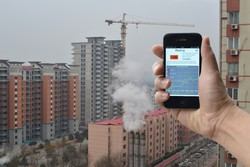Better air quality measurements
The ability to observe trace gases and their activities in the atmosphere is crucial for measuring and detecting important gases like nitrous oxide and ozone. In particular, researchers in the wider Earth science research community need a way to analyse trace gases. The EU-funded ALP-AIR (Atmospheric flux-measurements of precursor-gases for air-quality and climate research) initiative set out to develop a research programme to investigate the chemical composition of the atmosphere. The team wanted to develop instrumentation sensitive to reactive trace gases and aerosols important for public health and atmospheric research. ALP-AIR worked to investigate the exchange of reactive and non-reactive trace gases using different types of spectroscopy measurements. The researchers tested a new type of spectrometer, and used it in combination with weather, heat and CO2 observations at an Alpine location. The team conducted an air quality study and focused on atmosphere-to-surface exchange measurements above an urban location. Researchers measured reactive and non-reactive trace gases such as CO2 as well as aerosols and other important gases. Using a special spectrometer, ALP-AIR surpassed a former detection limit for atmospheric flux measurements for non-methane volatile organic compounds. The researchers successfully combined these measurements to detect nitrogen oxides (NOx) using a cavity ring-down spectrometer. For the first time, researchers successfully put quantitative and scalable constraints on their ability to examine trace gas impacts on urban atmospheric NOx fluxes. They found larger fluxes of traffic-related NOx emissions than predicted by current atmospheric chemistry and climate models. ALP-AIR studied the impacts of the high number of diesel-powered vehicles in Austria. The researchers also investigated the impact of future regulatory actions on local ozone-forming potential based on the ‘weekend effect’. These results have ramifications for many other parts of the world suffering from NOx pollution. They also have high societal relevance for current trends across European air quality networks, as many of these regulations are being violated. The technology developed in this initiative will ultimately provide data critical to developing cost-effective control strategies for air pollution and climate change regulation.
Keywords
Air quality, trace gases, ALP-AIR, atmospheric flux, spectroscopy, NOx fluxes







